If there is one little secret that truly makes a huge difference in the health, vitality and production of your tomato and pepper plants – it’s knowing when and how to prune them.
We are certainly passionate about growing our tomatoes and peppers. Not only do we love eating them fresh all summer long, we also preserve an enormous amount to stash in our pantry for the late fall and winter.
From canning homemade pasta sauce, salsa, picante, marinara, pizza sauce, candied jalapenos, banana pepper rings and hot pepper mustard, to freezing chili, vegetable, tomato and stuffed pepper soups – growing a sizable harvest is a must for us.
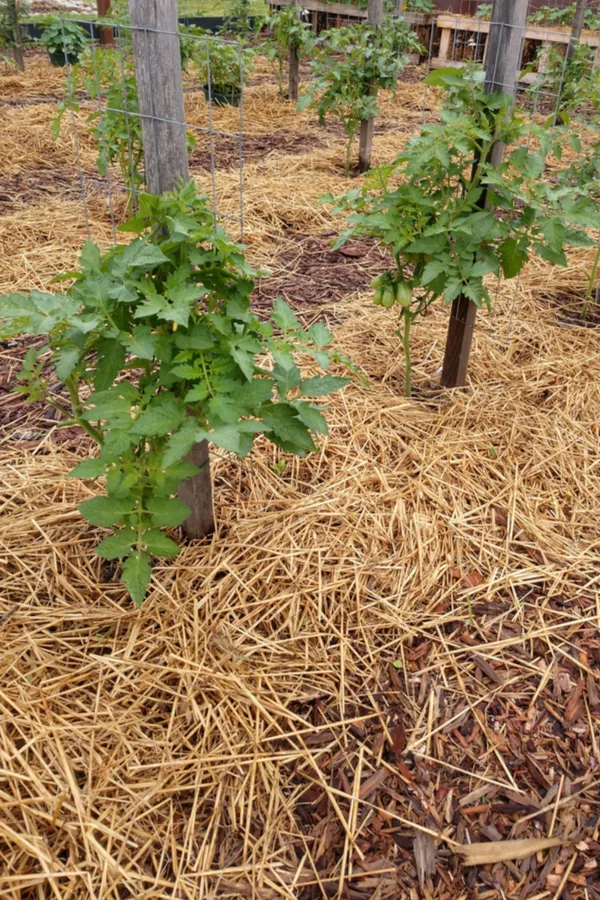
And that is exactly why pruning both our pepper and tomato plants is a must. As you will see below, it helps in so many incredible ways. And best of all – it’s easy to do!
Here is a look at why pruning is so important, and how to prune your peppers and tomatoes for success:
Why Pruning Tomato & Pepper Plants Is Important
So just exactly what does it mean to prune your plants? And why does it help them so much? When you boil it all down, pruning allows plants to have more air, light, water and nutrients. All while allowing them to use their limited resources on what matter most – producing fruit!
For both tomato and pepper plants, pruning should begin at the bottom of the plant. Allowing stems and leaves to grow at or near the bottom of the plant is a recipe for disaster.
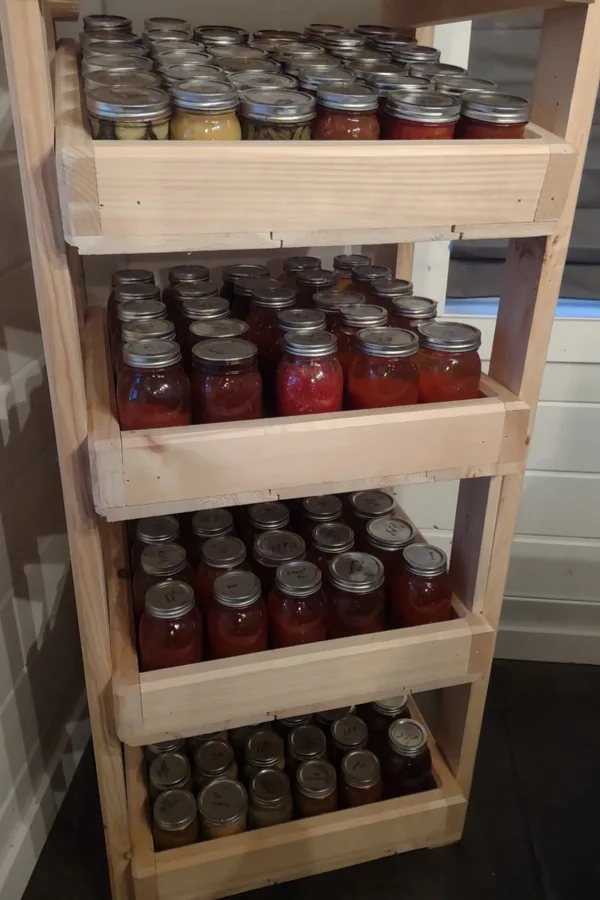
For starters, dense, thick stems and foliage at the base of plants blocks light, air and water. And both light and air are extremely important to the health and growth of vegetable plants.
Better lighting results in the faster ripening of fruit. It also improves the process of photosynthesis, helping to convert more of the sun’s valuable energy to power the plant’s growth.
As for improved air circulation, it not only helps with improved pollination, but provides much-needed oxygen to the plants as well. Even more, good air flow helps to keep disease, mold and mildew from taking hold by keeping excess moisture from building up.
More Reasons To Prune – How To Prune Tomato And Pepper Plants
The benefits of base pruning don’t stop there. Pruning off the bottom area of foliage allows water to more easily reach the crucial root zone areas of plants.
When a plant is covered in foliage, unfortunately, it sheds water away from the roots when it rains or you water.
But by opening up the bottom area, you instantly improve that access. And even better, it also allows for easier weeding, fertilizing, watering and harvesting.
But removing those bottom branches also helps big-time with pest control. Low lying branches that touch the soil make it easy for insects to hop aboard for a meal.
Perhaps even more, they can make it easy for the spores of soil-borne diseases such as tomato blight to find a path to your plants. And when that happens, you can say good-bye to your harvest!
Last but not least, clearing out the bottom of plants allows the plant to spend its energy on growing new branches and more blooms, and not on maintaining the unproductive bottom stems and leaves.
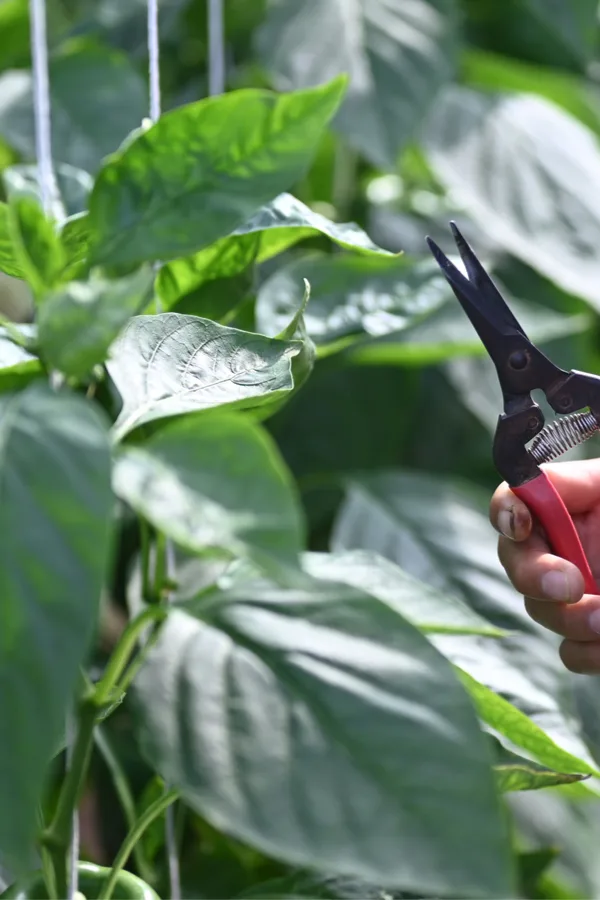
How To Prune & How Much To Remove – How To Prune Tomato And Pepper Plants
How much you remove when you prune pepper and tomato plants is determined by the size and variety of the plant.
We cover the specifics of tomato vs. pepper plant pruning in the next section, but in general, you will want to remove 6 to 10 inches of the base from smaller determinate plants. For larger indeterminate varieties, removing around 12 to 18 inches is the best rule of thumb.
One thing is for sure, always use clean, sharp pruners. Dull blades can easily scar and injure plants. That leads to the plant expending even more energy to heal the cut.
Cleaning is important as well. Wipe your blades down with a disinfectant wipe when going from plant to plant. Both tomato and pepper plants are notorious for carrying disease. But keeping blades clean can stop cross contamination with ease.
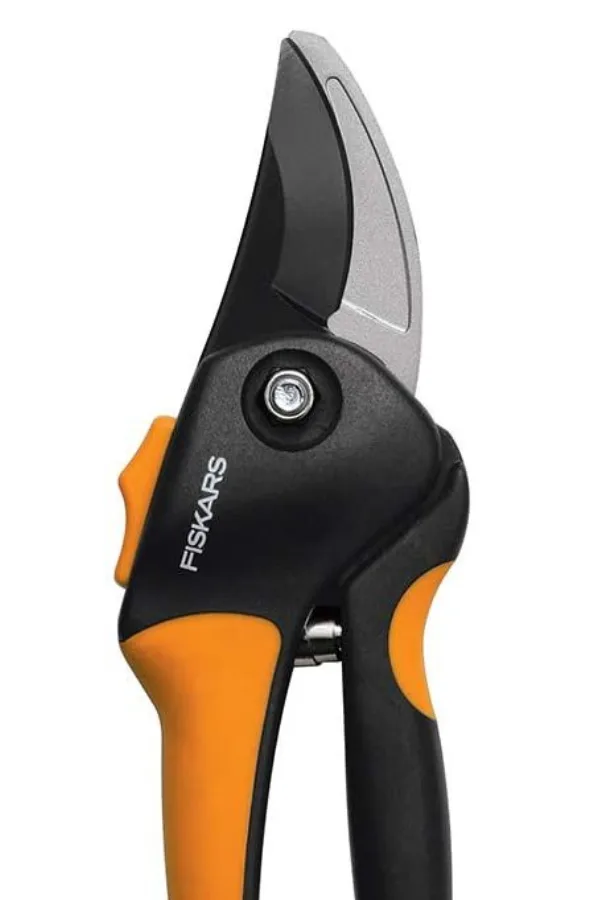
For us, small hand pruners like the Fiskars hand pruner work best. They allow easy access into tight areas and give a crisp clean cut. One final note when pruning, always be sure to cut back to the stem, but without cutting into or nicking the main stem. Again – this keeps the plant from wasting energy healing damage.
Now let’s take a look at the specifics of pruning pepper plants and tomatoes:
Pruning Peppers – How To Prune Tomato And Pepper Plants
For the majority of pepper plants, we usually remove a total of 6″ to 10″ of growth from the bottom of plants. Pepper plants tend to be a bit smaller than tomatoes, so less bottom pruning is necessary.
It is important to remove a little bit at a time from the bottom as the plant grows and matures. A few weeks after transplanting in the ground, we remove the bottom 3 to 4 inches of stems.
As it continues to grow in the following weeks, we will come back and snip off underneath the plant to clear out the area to around 6 to 8 inches. We rarely prune any upper branches on our peppers unless they are damaged or overly unruly.
Check Our Our Podcast On Growing Great Tomatoes!
If the middle of your plant becomes too dense, you can remove a few middle branches to allow more light in. Again, with peppers, less is more when pruning the middle and top sections.
Pruning Tomatoes – How To Prune Tomato And Pepper Plants
For tomato plants, how much you prune will depend on the variety you are pruning. For smaller, determinate plants, we remove 6 to 8 inches in the same method as our pepper plants. A little at first, and then coming back as they grow to remove the rest.
But for our large, indeterminate tomato plants, we remove as much as 12″ to 18″ once the plant is fully grown. For large varieties, start by removing any branches or stems that are 6 inches and below.
As it continues to grow up, keep removing more from the bottom until reaching the full 12 to 18 inches of clearing at the bottom. Unlike peppers, we do perform a bit more upper and mid pruning on our tomato plants.
For our large heirlooms, we will usually top the plants at about 6′ tall. This keeps them in check with our tomato supports, But it also helps to keep the plant’s energy focused on producing more blooms, not foliage.
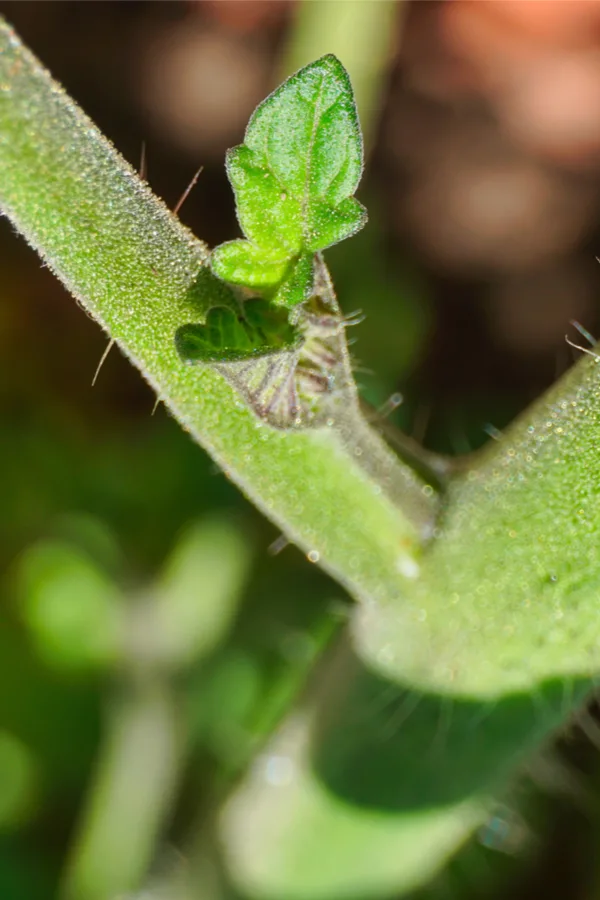
As for the middle sections, we do trim out a few mid branches here and there to allow for a bit more light and air flow. We try to select branches that have little fruit, or show signs of yellowing due to being cramped.
Pruning Suckers – How To Prune Tomato And Pepper Plants
So what about pruning tomato suckers? Suckers are the tiny “v” branches that sprout off of the main branches of tomatoes. These renegade branches rarely if ever produce fruit.
For many gardeners, removing suckers is a must. The theory is that they rob the plant of vital nutrients and should be removed. For us, we do remove large suckers as we see them, but in experiment after experiment in our garden over the last 10 years, we have never noticed a difference if most are left on.
Our advice – concentrate your efforts on pruning the bottoms and keeping air and light to your plants. Here’s to pruning your pepper and tomato plants – and a banner crop! Happy Gardening, Jim and Mary.
Jim and Mary Competti have been writing gardening, DIY and recipe articles and books for over 15 years from their 46 acre Ohio farm. The two are frequent speakers on all things gardening and love to travel in their spare time.
As always, feel free to email us at thefarm@owgarden.com with comments, questions, or to simply say hello! You can sign up for our free email list in the subscribe now box in the middle of this article. Follow us on Facebook here : OWG Facebook. This article may contain affiliate links.
